#IoT and energy management
Explore tagged Tumblr posts
Text

Transforming urban living with IoT technologies! 🏙💡 Discover how smart cities are becoming more secure, sustainable, and connected through innovative solutions. From energy-efficient systems to intelligent infrastructure, IoT is reshaping the future of urbanization. 🌍🚀
#Smart city IoT#IoT in urban planning#Cybersecurity in smart cities#IoT and energy management#Internet of Things (IoT)#Blockchain in smart cities#Real-time data in cities#AI in urban transportation
0 notes
Text
ESP32 Power Logger with 26V Power Range and Expandable I/O for Power Monitoring
#esp32#esp32 power logger#power logger#power monitoring#electronics#innovation#iot#iot applications#projects#smart home automation#smart home technology#energy management#energy efficiency#solar power system#solar power projects#industrial automation#micropython#circuitpython#arduino#breakout#esp32 microcontroller
0 notes
Text
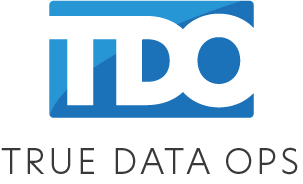
True Data Ops (TDO) is a federally certified Service-Disabled Veteran-Owned Small Business (SVOSB) specializing in comprehensive solutions for Work Order Management, Asset Management, and Energy Efficiency. Our cutting-edge technologies integrate IoT sensors, Building Automation Systems (BAS), and Building Management Systems (BMS) to deliver real-time insights and optimize operational performance. With advanced tools for Inventory Management and Predictive Maintenance, TDO empowers organizations to achieve seamless operations while reducing costs and energy consumption.

0 notes
Text
Integrating NMI-Approved Smart Meters for Enhanced Urban Energy Management
As urban centers continue to grow, the need for efficient and sustainable energy management becomes increasingly critical. Integrating advanced technologies like the PMC-220, an NMI-approved smart meter, is essential for optimizing power usage and promoting sustainability. This blog explores the advantages of using the PMC-220 smart energy meter and how it enhances urban energy management.
The PMC-220 Smart Energy Meter
The PMC-220 is a sophisticated power consumption meter designed to provide accurate and real-time data on electricity usage. This NMI-approved smart meter ensures compliance with the highest industry standards, offering reliability and precision crucial for urban energy management. By installing the PMC-220, cities can effectively monitor and control their energy consumption, leading to more efficient use of resources and significant cost savings.
Benefits of the PMC-220 for Urban Energy Management
1. Accurate Power Consumption Monitoring: The PMC-220 smart meter provides detailed insights into power consumption patterns. This information is invaluable for urban planners and utility companies aiming to optimize energy distribution and reduce waste.
2. Real-Time Data Analysis: One of the standout features of the PMC-220 is its ability to deliver real-time data. This capability allows for immediate adjustments to energy usage, minimizing waste and enhancing efficiency. Urban centers can leverage this data to implement dynamic energy management strategies that respond to real-time demands.
3. Sustainability Measurement: The PMC-220 serves as an effective sustainability measurement meter. By tracking energy consumption and identifying areas of inefficiency, it supports initiatives aimed at reducing carbon footprints and promoting environmental responsibility.
Smart Meter Installation Cost and Upgrade Considerations
The initial smart meter installation cost can be a concern for some, but the long-term benefits of upgrading to a PMC-220 smart meter far outweigh the expenses. The PMC-220 offers a robust return on investment through reduced energy bills, better energy management, and compliance with regulatory standards. Additionally, smart meter upgrades provide urban areas with the tools needed to support smart grid technologies and renewable energy integration.
Enhancing Urban Energy Management with the PMC-220
Urban energy management requires precise and reliable data to be effective. The PMC-220 smart meter power consumption data aids in making informed decisions about energy distribution and usage. This level of control is crucial for managing the energy demands of densely populated areas and ensuring that resources are used efficiently.
Future-Proofing Urban Energy Systems
As cities continue to evolve, so must their energy management systems. Integrating NMI-approved smart meters like the PMC-220 ensures that urban centers are prepared to meet future energy challenges. By adopting this advanced technology, cities can achieve better energy efficiency, lower operational costs, and contribute to a more sustainable future.
The PMC-220 smart energy meter is a key component in modernizing urban energy management. Its precise monitoring, real-time data capabilities, and role in sustainability make it an invaluable asset for any urban area looking to enhance its energy management practices. Investing in smart meter upgrades not only pays off in cost savings but also supports broader environmental and sustainability goals.
#iot#technology#energy consumption meter#lighting design#outdoor lighting#smart energy meter#energy management#energy efficiency
0 notes
Text
#building energy management system#smart building automation system#iot integrated automated solution#75f
0 notes
Text
Enhance Energy Efficiency with IoT-Based Smart Management Systems
Understand the potential of IoT in energy management systems to enhance efficiency, reduce costs, and promote sustainable practices.
0 notes
Text
Unleashing the Potentials of Blockchain-Based Solutions
The Future of Decentralization in Blockchain: Unleashing the Potentials of Blockchain-Based Solutions Introduction The digital landscape is rapidly evolving. At the heart of this transformation lies blockchain technology. While often associated with cryptocurrencies like Bitcoin and Ethereum, blockchain’s true potential extends far beyond digital currencies. It promises a decentralized future…
#blockchain#blockchain applications#blockchain governance#blockchain technology#blockchain trends#cryptocurrency#DAOs#De Beers#decentralization#decentralized exchanges#decentralized finance#DeFi#energy consumption#Estonia#future of blockchain#governance#healthcare#interoperability#IoT#privacy solutions#regulation#scalability#security#smart contracts#stablecoins#supply chain management#tokenization#transparency#VeChain
0 notes
Text
Revolutionizing Home Convenience: Samsung Unveils AI-Enhanced Family Hub Refrigerator in Australia
Samsung Electronics Co., Ltd. has recently unveiled its highly anticipated AI Family Hub French Door Refrigerator, now available across Australia. This advanced appliance represents a significant leap forward in the integration of artificial intelligence within home devices, offering unprecedented connectivity and smart capabilities. Launched just two days ago, the AI Family Hub is designed to…

View On WordPress
#21.5-inch screen#advanced cooling#AI Cleaning Mode#AI Family Hub#AI Floor Detect#AI Pro Cooking#AI technology#AI Vision Inside#AI Wash#artificial intelligence#BESPOKE AI#connectivity#Consumer Electronics#digital inverter#Eco-Friendly#energy conservation#energy efficiency#entertainment hub#family hub#food inventory#food management#food waste reduction#French Door Refrigerator#future tech#home automation#home management#household appliances#innovative technology#intelligent refrigerator#IoT
0 notes
Text
#solar monitoring#solar monitoring company#solar energy management company#solar plant monitoring system#solar monitoring system india#iot solar power monitoring system
0 notes
Text
Japan Smart Cities Market: Global Industry Analysis and Forecast 2023 – 2030
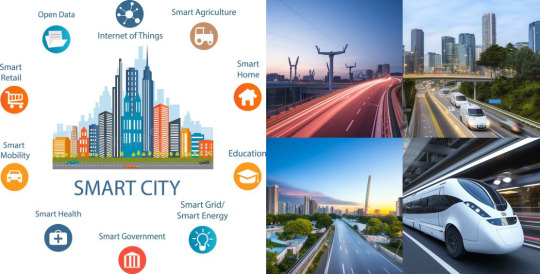
Japan's Smart Cities are Expected to Grow at a Significant Growth Rate, and the Forecast Period is 2023-2030, Considering the Base Year as 2022.
Japan has been aggressively attempting to turn its cities into smart cities by incorporating cutting-edge technology and data solutions to enhance citizen quality of life and local services. The nation has made significant investments in 5G networks, Internet of Things (IoT) devices, and high-speed internet connections as part of its technology infrastructure investments. These technologies are essential for gathering and evaluating data from the city's diverse sources.
Japan's smart city initiatives are mostly focused on sustainable energy solutions, with an emphasis on the advancement of renewable energy sources like solar and wind power in addition to the implementation of smart grid technologies to improve energy distribution. Furthermore, smart transit systems are being used by Japanese towns to lessen traffic jams and enhance public transportation, all in an effort to increase mobility and traffic. This involves encouraging the use of electric vehicles and integrating intelligent traffic management.
In Japan, planning and urban design are crucial to the development of smart cities. The nation employs data analytics to develop energy-efficient buildings, enhance urban planning, and generate green spaces. Real-time data on a range of urban elements, including trash management, water use, energy consumption, and air quality, is gathered through the widespread use of IoT devices and sensor networks.
Japan emphasizes the significance of citizen interaction for developing smart cities. The objective is to use digital platforms, feedback mechanisms, and participatory planning to involve inhabitants in decision-making. Furthermore, the nation gives top priority to deploying smart technologies for public safety, security, surveillance, emergency coordination, and disaster management strategy deployment.
Get Full PDF Sample Copy of Report: (Including Full TOC, List of Tables & Figures, Chart) @
Updated Version 2024 is available our Sample Report May Includes the:
Scope For 2024
Brief Introduction to the research report.
Table of Contents (Scope covered as a part of the study)
Top players in the market
Research framework (structure of the report)
Research methodology adopted by Worldwide Market Reports
Leading players involved in the Japan Smart Cities Market include:
Panasonic Corporation (Japan), Hitachi Ltd. (Japan), Mitsubishi Electric Corporation (Japan), Siemens AG (Germany), Toshiba Corporation (Japan), NEC Corporation (Japan), Fujitsu Limited (Japan), Sumitomo Mitsui Construction Co., Ltd. (Japan), NTT Group (Japan), Schneider Electric SE (France), Toyota Motor Corporation (Japan), Ericsson (Sweden), ABB Group (Switzerland), SoftBank Group Corp. (Japan), Honda Motor Co. Ltd. (Japan), Shimizu Corporation (Japan), Sekisui House Ltd. (Japan), Daikin Industries Ltd. (Japan), ORIX Corporation (Japan), Yokogawa Electric Corporation (Japan), and Other Major Players
Moreover, the report includes significant chapters such as Patent Analysis, Regulatory Framework, Technology Roadmap, BCG Matrix, Heat Map Analysis, Price Trend Analysis, and Investment Analysis which help to understand the market direction and movement in the current and upcoming years.
If You Have Any Query Japan Smart Cities Market Report, Visit:
https://pristineintelligence.com/inquiry/japan-smart-cities-market-113
Segmentation of Japan Smart Cities Market:
By Solution and Service
Smart Mobility Management
Smart Public Safety
Smart Healthcare
Smart Building
Smart Utilities
Others
By Component
Hardware
Software
Service
By Level
Emerging Smart Cities
Developing Smart Cities
Mature Smart Cities
By End-user
Government & Municipalities
Transportation & Logistics
Energy & Utilities
Healthcare
Education
Others
Importance of the Report :
• Qualitative and quantitative analysis of current trends, dynamics and estimates;
• Provides additional highlights and key points on various Japan Smart Cities market segments and their impact in the coming years.
• The sample report includes the latest drivers and trends in the Japan Smart Cities market.
• The report analyzes the market competitive environment and provides information about several market vendors.
• The report provides forecasts of future trends and changes in consumer behavior.
• Comprehensive fragmentation by product type, end use and geography.
• The study identifies many growth opportunities in the global Japan Smart Cities market.
• The market study also highlights the expected revenue growth of the Japan Smart Cities market.
Our study encompasses major growth determinants and drivers, along with extensive segmentation areas. Through in-depth analysis of supply and sales channels, including upstream and downstream fundamentals, we present a complete market ecosystem.
If you require any specific information that is not covered currently within the scope of the report, we will provide the same as a part of the customization.
Acquire This Reports: -
https://pristineintelligence.com/buy-now/113
About Us:
We are technocratic market research and consulting company that provides comprehensive and data-driven market insights. We hold the expertise in demand analysis and estimation of multidomain industries with encyclopedic competitive and landscape analysis. Also, our in-depth macro-economic analysis gives a bird's eye view of a market to our esteemed client. Our team at Pristine Intelligence focuses on result-oriented methodologies which are based on historic and present data to produce authentic foretelling about the industry. Pristine Intelligence's extensive studies help our clients to make righteous decisions that make a positive impact on their business. Our customer-oriented business model firmly follows satisfactory service through which our brand name is recognized in the market.
Contact Us:
Office No 101, Saudamini Commercial Complex,
Right Bhusari Colony,
Kothrud, Pune,
Maharashtra, India - 411038 (+1) 773 382 1049 +91 - 81800 - 96367
Email: [email protected]
#IoT (Internet of Things)#Urban Mobility#Smart Infrastructure#DigitalGovernance#BigDataandAnalytics#Renewable Energy#5G Technology#Cybersecurity#Environmental Sustainability#Smart Healthcare#Smart Education#Waste Management#Smart Water Management#Augmented Reality (AR) and Virtual Reality (VR)#AI (Artificial Intelligence)#Blockchain#SmartSensors#SmartAgriculture
0 notes
Text
Middle East and Africa Smart City Market: Global Industry Analysis and Forecast 2023 – 2030
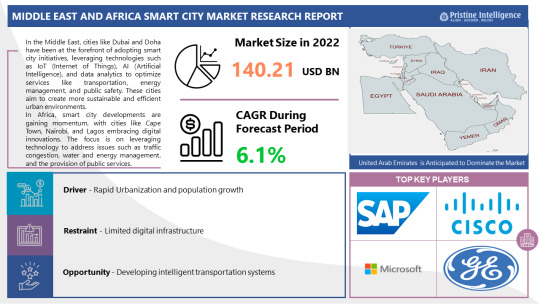
Middle East and Africa Smart City Market Size Was Valued at USD 140.21 Billion in 2022, and is Projected to Reach USD 225.17 Billion by 2030, Growing at a CAGR of 6.1% From 2023-2030.
A Smart City is an urban environment that leverages advanced technologies to enhance the quality of life for its residents and improve overall efficiency in various aspects of city management. It integrates information and communication technology (ICT), data analytics, and the Internet of Things (IoT) to optimize infrastructure, services, and communication.
In the Middle East, cities like Dubai and Doha have been at the forefront of adopting smart city initiatives, leveraging technologies such as IoT (Internet of Things), AI (Artificial Intelligence), and data analytics to optimize services like transportation, energy management, and public safety. These cities aim to create more sustainable and efficient urban environments.
In Africa, smart city developments are gaining momentum, with cities like Cape Town, Nairobi, and Lagos embracing digital innovations. The focus is on leveraging technology to address issues such as traffic congestion, water and energy management, and the provision of public services.
Get Full PDF Sample Copy of Report: (Including Full TOC, List of Tables & Figures, Chart) @
Leading players involved in the Middle East and Africa Smart City Market include:
Etisalat Digital, Huawei Technologies, Orange Business Services, Schneider Electric, Microsoft Azure, SAP, Mastercard Labs for Financial Technology, IHS Markit, SWVL, Careem, Dubai Roads & Transport Authority, Hyperloop One, Masdar, Enel X, Veolia, Green Climate Fund, Accenture, Cisco Systems, Siemens,Orascom Construction PLC
The latest research on the Middle East and Africa Smart City market provides a comprehensive overview of the market for the years 2023 to 2030. It gives a comprehensive picture of the global Middle East and Africa Smart City industry, considering all significant industry trends, market dynamics, competitive landscape, and market analysis tools such as Porter's five forces analysis, Industry Value chain analysis, and PESTEL analysis of the Middle East and Africa Smart City market. Moreover, the report includes significant chapters such as Patent Analysis, Regulatory Framework, Technology Roadmap, BCG Matrix, Heat Map Analysis, Price Trend Analysis, and Investment Analysis which help to understand the market direction and movement in the current and upcoming years. The report is designed to help readers find information and make decisions that will help them grow their businesses. The study is written with a specific goal in mind: to give business insights and consultancy to help customers make smart business decisions and achieve long-term success in their particular market areas.
If You Have Any Query Middle East and Africa Smart City Market Report, Visit:
Segmentation of Middle East and Africa Smart City Market:
By Component
Hardware
Software
Service
By Functional Area
Smart Infrastructure
Smart Governance and Smart Education
Smart Energy
Smart Mobility
Smart Healthcare
Smart Buildings
Public Safety
By Region
Middle East & Africa (Turkey, Bahrain, Kuwait, Saudi Arabia, Qatar, UAE, Israel, South Africa)
Importance of the Report:
• Qualitative and quantitative analysis of current trends, dynamics and estimates;
• Provides additional highlights and key points on various Middle East and Africa Smart City market segments and their impact in the coming years.
• The sample report includes the latest drivers and trends in the Middle East and Africa Smart City market.
• The report analyses the market competitive environment and provides information about several market vendors.
• The report provides forecasts of future trends and changes in consumer behaviour.
• Comprehensive fragmentation by product type, end use and geography.
• The study identifies many growth opportunities in the Middle East and Africa Smart City market.
• The market study also highlights the expected revenue growth of the Middle East and Africa Smart City market.
Our study encompasses major growth determinants and drivers, along with extensive segmentation areas. Through in-depth analysis of supply and sales channels, including upstream and downstream fundamentals, we present a complete market ecosystem.
If you require any specific information that is not covered currently within the scope of the report, we will provide the same as a part of the customization.
Acquire This Reports: -
About Us:
We are technocratic market research and consulting company that provides comprehensive and data-driven market insights. We hold the expertise in demand analysis and estimation of multidomain industries with encyclopedic competitive and landscape analysis. Also, our in-depth macro-economic analysis gives a bird's eye view of a market to our esteemed client. Our team at Pristine Intelligence focuses on result-oriented methodologies which are based on historic and present data to produce authentic foretelling about the industry. Pristine Intelligence's extensive studies help our clients to make righteous decisions that make a positive impact on their business. Our customer-oriented business model firmly follows satisfactory service through which our brand name is recognized in the market.
Contact Us:
Office No 101, Saudamini Commercial Complex,
Right Bhusari Colony,
Kothrud, Pune,
Maharashtra, India - 411038 (+1) 773 382 1049 +91 - 81800 - 96367
Email: [email protected]
#IoT (Internet of Things)#Urban Mobility#Smart Infrastructure#DigitalGovernance#BigDataandAnalytics#Renewable Energy#5G Technology#Cybersecurity#Environmental Sustainability#Smart Healthcare#Smart Education#Waste Management#Smart Water Management#Augmented Reality (AR) and Virtual Reality (VR)#AI (Artificial Intelligence)#Blockchain#SmartSensors#SmartAgriculture
0 notes
Text
Precision Poultry Farming: Navigating the Future of Fowl Husbandry
Precision poultry farming is a revolutionary technical innovation that is taking off in the fast-paced world of poultry production. Using automation, data analytics, and technology, this creative approach to poultry management maximizes each step of the chicken farming process. We’ll dive into the world of precision poultry farming in this blog article, covering its advantages, essential…

View On WordPress
#Agribusiness#Agriculture#artificial intelligence AI#Business#Commercial agriculture#Farm management#internet of things IoT#Livestock#Livestock management#Poultry#precision agriculture#renewable energy
1 note
·
View note
Text
Siemens acquires Heliox, specialist in eBus and eTruck fast charging solutions
🚀 Siemens acquires Heliox! A major move in eMobility, bringing advanced eBus/eTruck fast charging solutions to the forefront. #SiemensHeliox #EVFuture 🔌��🚚💡🌍
Heliox expands Siemens eMobility’s offering for the growing eBus and eTruck charging market, and for depot and fleet solutions Accelerates value creation in Siemens’ fast-growing eMobility business Adds attractive digitalization and software potential Siemens AG has completed the acquisition of Heliox, a technology leader in DC fast charging solutions, serving eBus and eTruck fleets and…
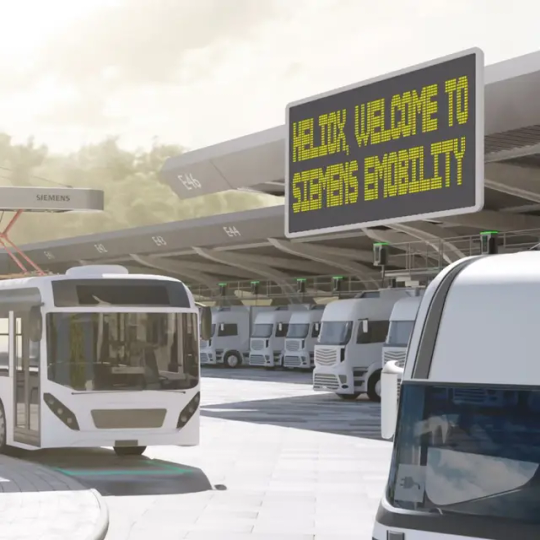
View On WordPress
#CES2024#charging technology#DC fast charging#Digitalization#eBus charging#electric vehicle#eMobility#eMobility market#Energy Management#eTruck charging#EV charging#fast charging solutions#Heliox#Iot#power electronics#Siemens#Siemens Smart Infrastructure#software solutions
0 notes
Text
Understanding the MK7C Series 3: A Leap in Smart Meter Technology
Today’s world of rapid technological advancement has created an unprecedented demand for effective energy management solutions. Smart meters, such as the MK7C Series 3 from LPA Smart Meters, are revolutionizing the utility industry as we move through an era of technological innovation. This article explains why the MK7C Series 3 smart meter is unique by examining its features, advantages, and practical uses.
The MK7C Series 3 Smart Meter’s Unveiling
The MK7C Series 3 is a complete energy management tool beyond a simple meter. Its purpose is to improve utility services and give consumers more control over how much energy they use. The most recent technology was used in its construction to deliver accurate energy measurements and comprehensive consumption statistics. What sets the MK7C Series 3 apart is its ability to integrate seamlessly with home and business energy systems, promoting efficiency and sustainability.
Key Features of the MK7C Series 3
Compatibility with Advanced Metering Infrastructure (AMI): The MK7C Series 3 has AMI capabilities, enabling real-time data transfer between the energy provider and the meter. Thanks to this function, manual meter readings are no longer necessary, making remote monitoring, paying, and management more effortless.
User-Friendly Interface: The meter’s user interface and precise, easy-to-read display enable users to manage their usage and track their energy consumption habits efficiently.
Improved Energy Management: By tracking energy usage in real-time, users may pinpoint peak usage periods and modify their routines to save energy and money.
Durability and Reliability: The MK7C Series 3 guarantees long-lasting performance and dependability because it can resist various weather situations, making it a worthwhile investment for residential and commercial settings.
Benefits of Implementing the MK7C Series 3
Cost-effectiveness: The MK7C Series 3 helps consumers reduce wasteful power consumption, which lowers their overall energy expenditures, by offering comprehensive insights into energy usage.
Environmental Impact: This intelligent meter contributes to the global shift towards sustainable energy by encouraging responsible energy consumption and reducing carbon footprints.
Operational Efficiency: The MK7C Series 3 offers accurate billing solutions based on actual use rather than estimations, improves customer service, and streamlines operations for utility businesses.
Future Proofing: By incorporating devices such as the MK7C Series 3, we can better equip companies and consumers to take advantage of future technology breakthroughs in energy management as we progress toward more innovative homes and cities.
Practical Uses
Due to its versatility, the MK7C Series 3 can be applied in various settings, such as commercial and industrial enterprises, residential complexes, and buildings. It benefits major organizations trying to optimize their energy plans and cities striving to become more innovative and energy-efficient because of its real-time data processing and reporting capabilities.
In summary
LPA Smart Meters’ MK7C Series 3 represents the future of energy management. It satisfies the needs of energy users today and sets the stage for future breakthroughs thanks to its sophisticated features and user-centric design. The MK7C Series 3 provides a practical and dependable way for businesses, homeowners, and utility providers to control energy use and embrace a sustainable future.
This smart meter is a step towards a wiser, more sustainable future, not just a tool. Anybody wishing to improve their energy management systems should consider the MK7C Series 3.
0 notes
Text
Why Does Distributed I/O Module Play an Important Role in Energy Management Systems?
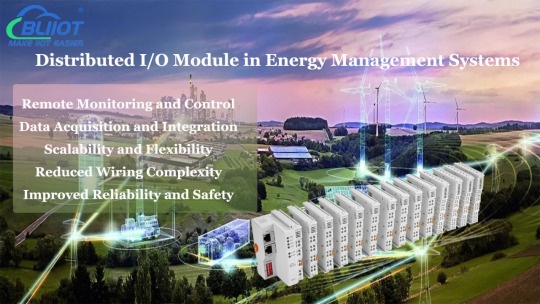
Distributed I/O (Input/Output) modules play a crucial role in energy management systems.
1. Remote Monitoring and Control: Distributed I/O modules allow for remote monitoring and control of various devices and equipment in an energy management system. They provide the ability to collect data from sensors, meters, and other devices located throughout a facility or an industrial plant, enabling real-time monitoring and control of energy usage.

2. Data Acquisition and Integration: Distributed I/O modules act as data acquisition points, collecting data from different sensors and meters distributed across the energy management system. This data is then integrated into a central control system or a supervisory control and data acquisition (SCADA) system, allowing for comprehensive analysis, visualization, and decision-making.
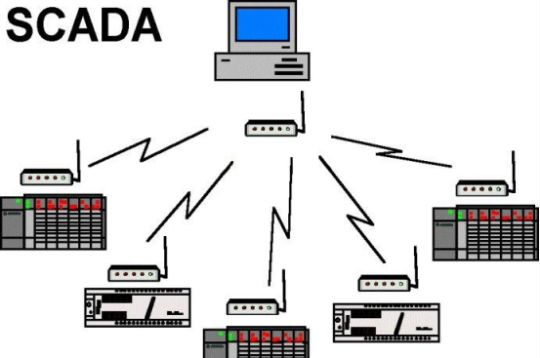
3. Scalability and Flexibility: With distributed I/O modules, it becomes easier to scale up or expand an energy management system. Additional modules can be added as needed to accommodate new equipment, devices, or areas within a facility. This scalability and flexibility enable effective energy management across different zones or buildings, providing a holistic view of energy consumption.
4. Reduced Wiring Complexity: Distributed I/O modules eliminate the need for extensive wiring by allowing sensors and devices to be connected directly to the modules located closer to the field devices. This reduces the complexity of wiring infrastructure, minimizes installation costs, and simplifies maintenance and troubleshooting.
5. Improved Reliability and Safety: By distributing I/O modules throughout an energy management system, the risk of single-point failures is reduced. Even if one module fails, the rest of the system can continue to operate. Additionally, distributed I/O modules often have built-in safety features, such as short-circuit protection and electrical isolation, ensuring the safety of personnel and equipment.
Overall, distributed I/O modules enhance the efficiency, visibility, and control of energy management systems. They enable remote monitoring, data integration, scalability, and simplify installation and maintenance, contributing to effective energy management and optimization.
0 notes